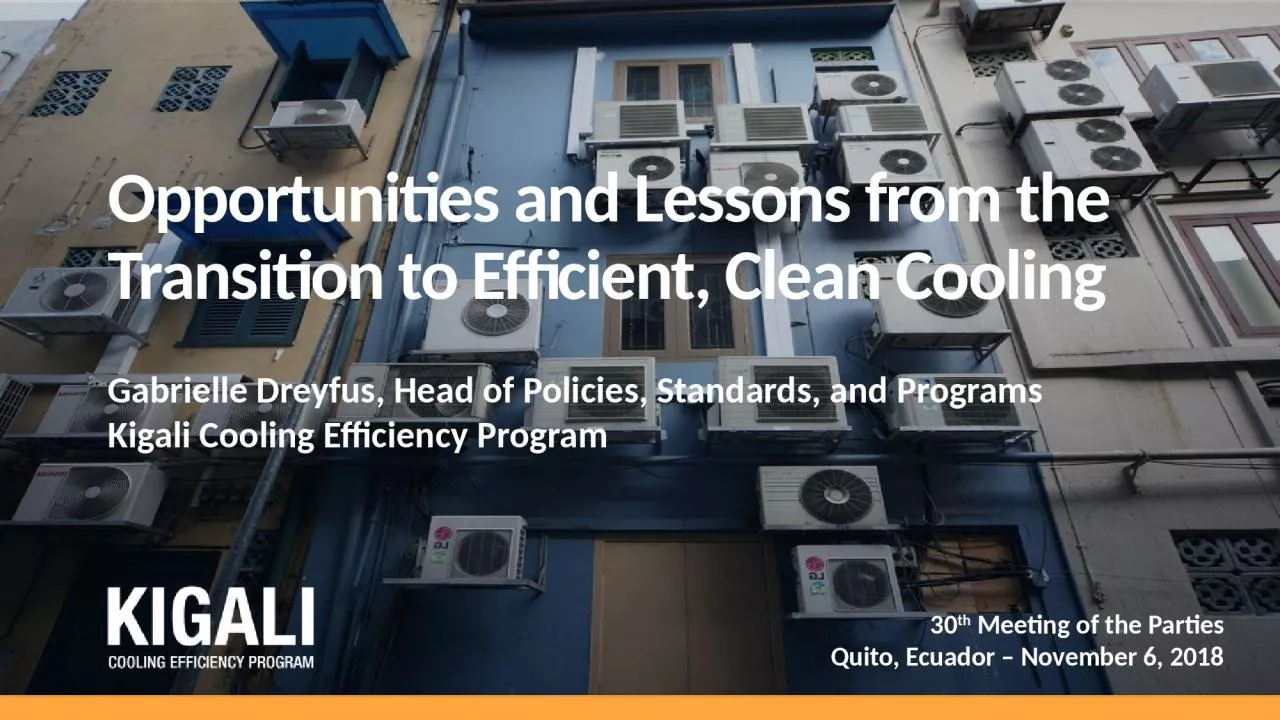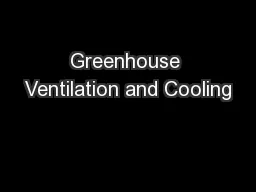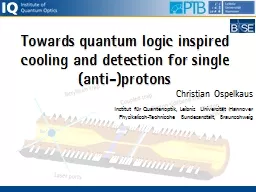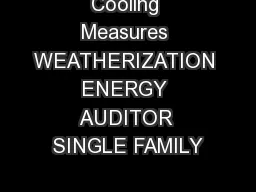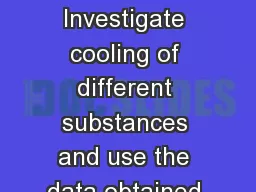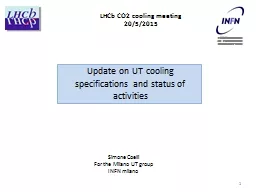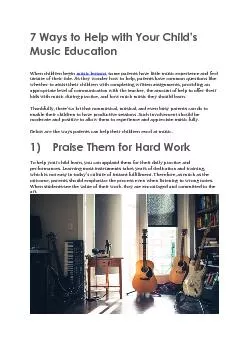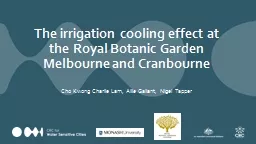PPT-Opportunities and Lessons from the Transition to Efficient, Clean Cooling
Author : natalie | Published Date : 2023-06-25
Gabrielle Dreyfus Head of Policies Standards and Programs Kigali Cooling Efficiency Program 30 th Meeting of the Parties Quito Ecuador November 6 2018 AGENDA 2
Presentation Embed Code
Download Presentation
Download Presentation The PPT/PDF document "Opportunities and Lessons from the Trans..." is the property of its rightful owner. Permission is granted to download and print the materials on this website for personal, non-commercial use only, and to display it on your personal computer provided you do not modify the materials and that you retain all copyright notices contained in the materials. By downloading content from our website, you accept the terms of this agreement.
Opportunities and Lessons from the Transition to Efficient, Clean Cooling: Transcript
Download Rules Of Document
"Opportunities and Lessons from the Transition to Efficient, Clean Cooling"The content belongs to its owner. You may download and print it for personal use, without modification, and keep all copyright notices. By downloading, you agree to these terms.
Related Documents

